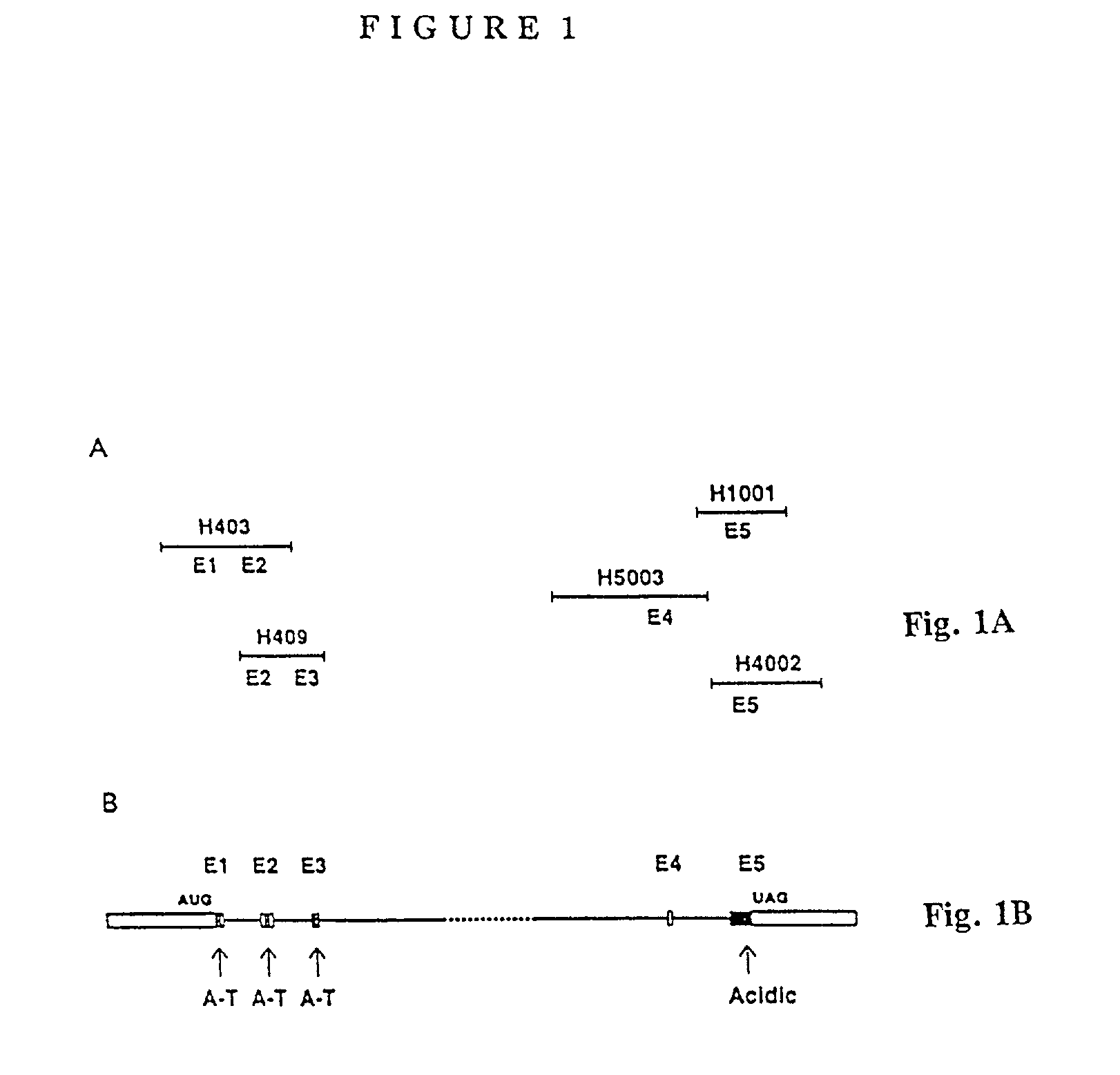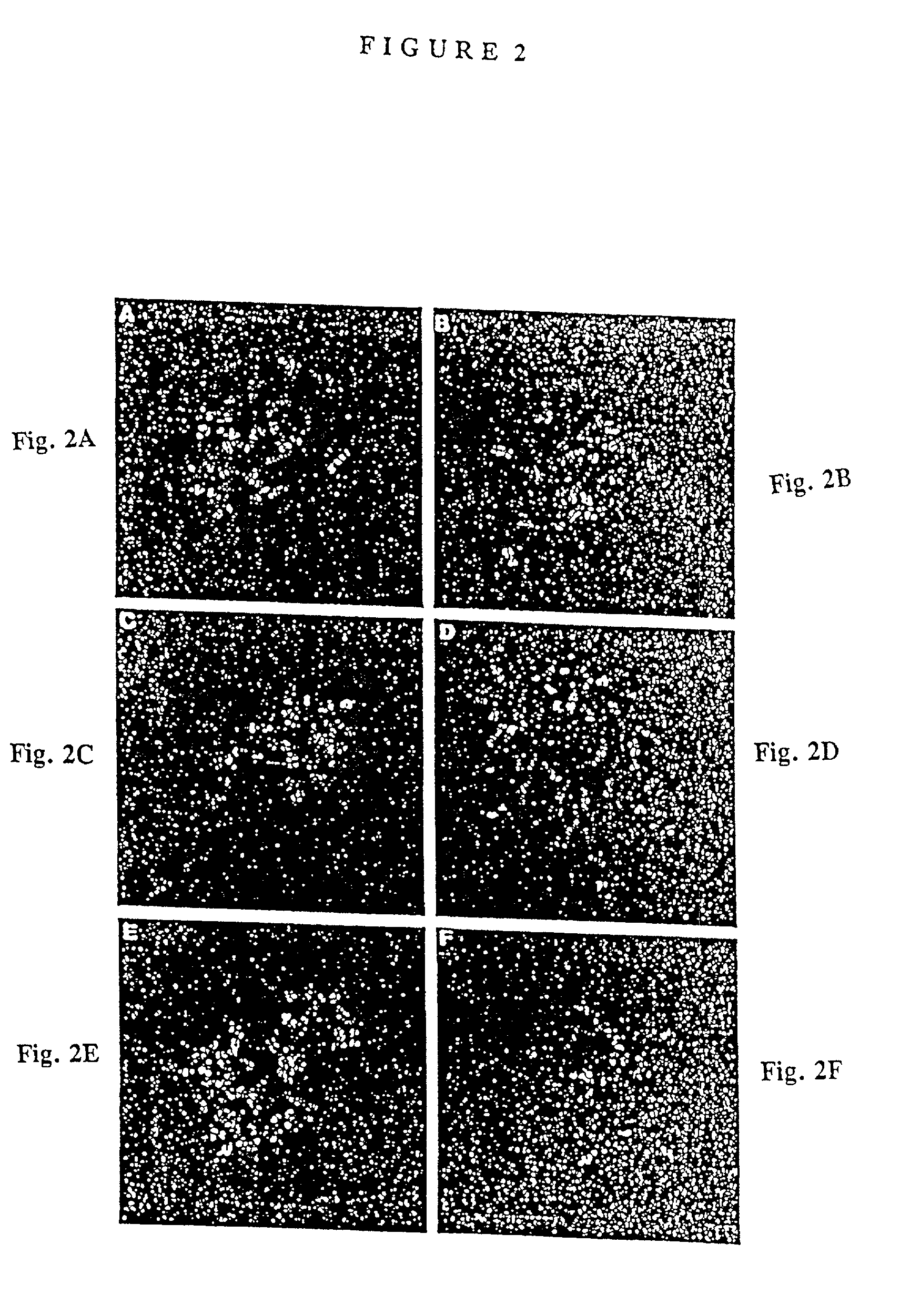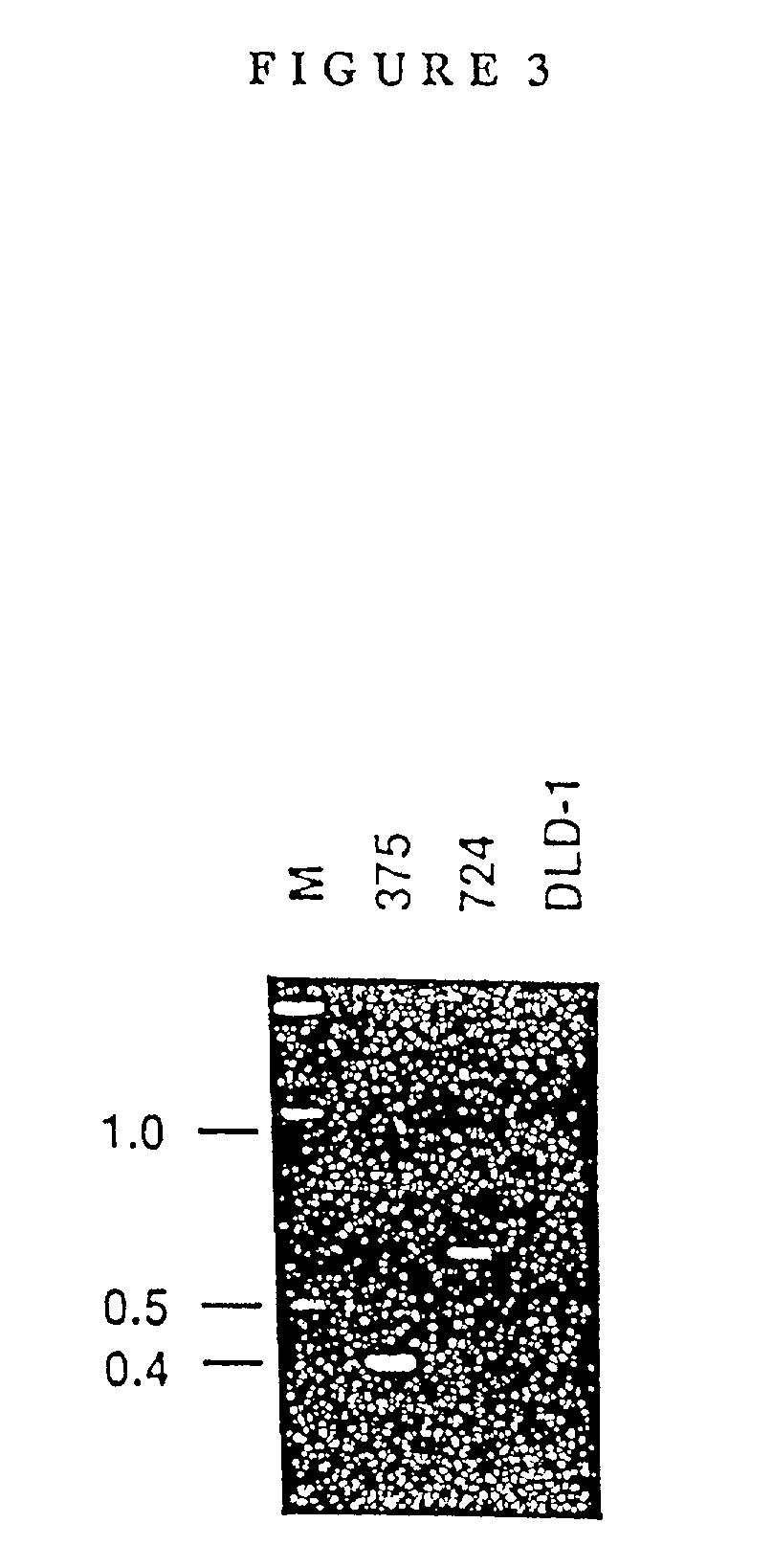Hmgi proteins in cancer and obesity
a cancer and obesity technology, applied in the field of hmgi proteins in cancer and obesity, can solve the problems of small stature, uterine leiomyomata constitutes a major health problem, and variety of developmental abnormalities
- Summary
- Abstract
- Description
- Claims
- Application Information
AI Technical Summary
Problems solved by technology
Method used
Image
Examples
Embodiment Construction
HMGI Proteins in Adipogenesis and Mesenchyme Differentiation
[0156] The GenBank accession numbers for the novel sequences in the chimeric transcripts from ST90-375 and ST93-724 are U28131 and U28132, respectively.
[0157] Isolation of YACs at the Human Pygmy Locus
[0158] Initially, conserved fragments were isolated from the cloned, mouse pygmy locus (Xiang et al., 1990; K. Benson and K. C., unpublished observations) and were used as probes on a normal, human lambda genomic library (Sambrook et al., 1989). The cross-hybridizing clones were isolated and relevant homologous fragments were subcloned and sequenced. Specific oligonucleotide primers (sequence 5'-AGGGGACAACAAATGCCCACAGG and 5'-CGTCACCAGGGACAGTTTCACTTGG) were synthesized and used to screen a human total genomic YAC library by the PCR-based method (Green and Olson, 1990). Four positive clones of Saccharomyces cerevisiae containing YACs yWPR383, yWPR384, yWPR385 and yWPR386 were isolated.
[0159] Construction and Screening of Phage ...
PUM
| Property | Measurement | Unit |
|---|---|---|
| body weight | aaaaa | aaaaa |
| weight | aaaaa | aaaaa |
| weight | aaaaa | aaaaa |
Abstract
Description
Claims
Application Information
 Login to View More
Login to View More - R&D
- Intellectual Property
- Life Sciences
- Materials
- Tech Scout
- Unparalleled Data Quality
- Higher Quality Content
- 60% Fewer Hallucinations
Browse by: Latest US Patents, China's latest patents, Technical Efficacy Thesaurus, Application Domain, Technology Topic, Popular Technical Reports.
© 2025 PatSnap. All rights reserved.Legal|Privacy policy|Modern Slavery Act Transparency Statement|Sitemap|About US| Contact US: help@patsnap.com



